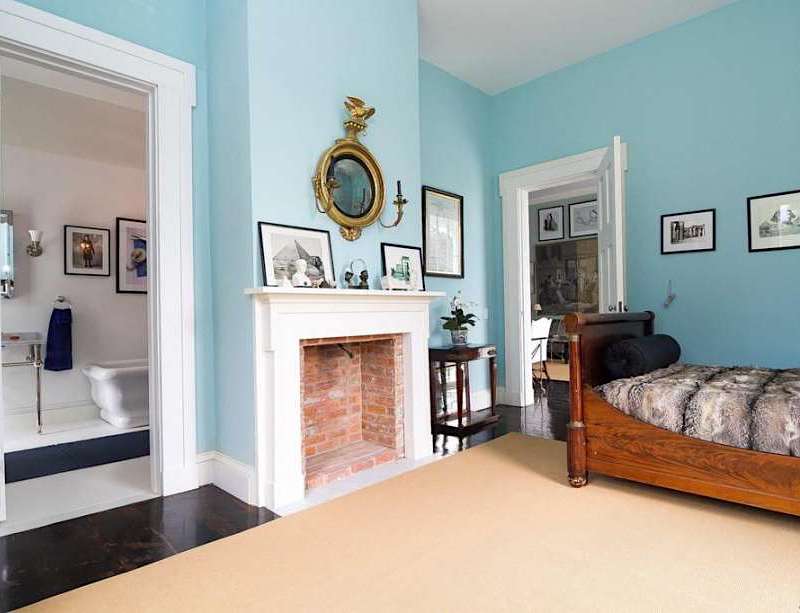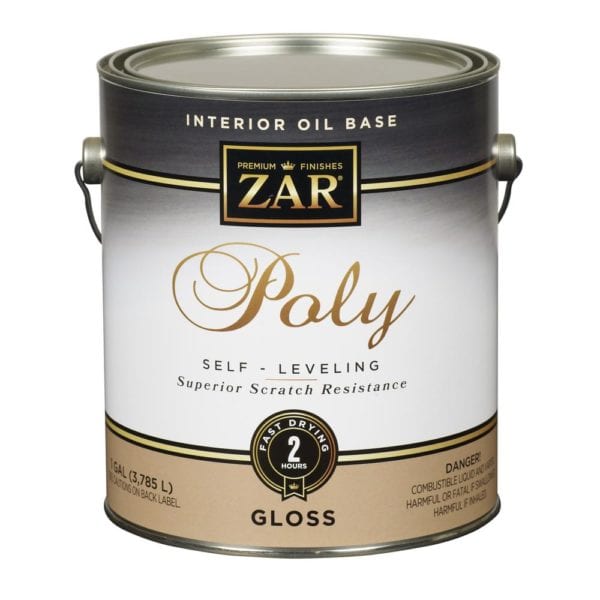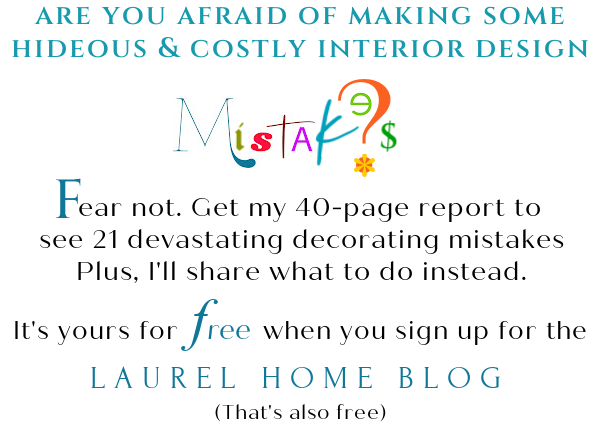Wow, guys! Many comments and opinions from Wednesday’s post focused on the hardwood floors of my new place. This is actually a continuation of that post. However, instead of light and white floors, the focus will be on super dark hardwood floors.
I’ve always found it interesting throughout my career that one person can look at something, for instance, a sofa. One will say, “oh, that’s so traditional.” And, another person will say, “That sofa’s too contemporary.”
It’s the same sofa.
Is one of them wrong? Maybe. Or, they might both be wrong, or they may both be right.
However, I’ve mentioned this numerous times on the blog how the word “traditional” is often a misnomer. Traditional means something historical, right?

Well, there is nothing historical about a sofa that looks like this. That is, unless you’re only going back to the 1940s at the earliest.

This Chippendale style camel-back sofa is traditional.
So, let’s talk about the floor finishes a bit more. There’s a third word that came up a lot in the comments. And, it’s become a dirty word. A dirty six-letter word.
“Trendy.”
Telling someone, they’re doing something “trendy” is pretty much the same as saying, “you’re an idiot who’s going to regret this decision in ten years.”
One trend discussed regarding the white floors is the current “trend” of Scandinavian (Scandi) or Swedish Gustavian style. The former is a popular contemporary style. And the latter is a classic style that’s been around since the late 18th century. Gustavian is actually the Swedish neo-classical style, which occurred simultaneously as the Louis XVI neoclassical style in France and the Georgian neoclassical style in England.
Now, it’s possible that a design style can be BOTH trendy and an enduring classic. And, it can be both contemporary and traditional.
That is the case with the white-painted or stained white floors.
However, if you perceive it as purely contemporary, it’s most likely because you don’t know its history.
And, that’s okay if you don’t know. I don’t know how to drill a hole in someone’s head.
I realized the other day that it isn’t ten years that I’ve loved Swedish interiors and white floors. It’s been at least 30 years. I saw a gorgeous Swedish room in a magazine and fell in love. But, there was no trend back then. That doesn’t mean I’m not influenced by trends just like most of us are. However, that is not the case with my love of white floors.
The truth of the matter is, no one lives as the Victorians did in 19th century Boston.
I’m looking forward to visiting the Gibson House Museum, which is a short walk from my new place. This home built in 1860 was lived in by three generations for the Gibson family until 1954. And, apparently, they weren’t into any remodeling, so after the last family vacated the place, it became a museum in 1957.
You can take a virtual tour of the museum here.
By our modern-day standards, the house feels dark and heavy.
![]()
As for the floors, well, except for a sliver in the kitchen of some pretty beat up floors, you can’t even see them under the heavy rugs.

Conversely, here is a two-bedroom apartment that recently sold 280 feet away from the Gibson House, on the same block. Please check out one of my favorite posts where I reconfigured this place so that the kitchen isn’t eating the fireplace.
The contrast is pretty jarring.
These kinds of renovations are commonplace. Hopefully, the new owners will fix some of this. However, my point is that painted or white stained floors ARE traditional and historically accurate for a period earlier than when this house was built. But remember, Victorians never said, “Okay, we need to design this house in the Victorian Style because we live in the Victorian era.”
That would be like people living in the UK, today saying, “Okay, we need to design this house in the Queen Elizabeth II-style because we are living during her reign.”
Those designations only happen after the fact, as a matter of perspective.
I’m trying to say that people just designed what they liked, as we do in the present. And while there were prevalent trends, just like there are today, that doesn’t mean that everyone followed them. Or, there might’ve been some folks who were ahead of their time, the trendsetters of their time. After all, that’s how trends and change occur.
My goal isn’t to change minds but to expand our view into broader ways of thinking about what is appropriate in design and what isn’t.
What bothers me is when people think in absolutes such as:
- We must have a kitchen island, even if it’s hanging out into the middle of the living room.
- Everyone wants an open floor plan. (nope. everyone does not want an open floor plan)
- We need to take all of these fussy old mouldings down because no one does those anymore.
That’s not really the reason. The reason is money. When they break up the rooms, the problem is that they need to recreate the old mouldings on the new walls. And, it’s bloody expensive. Thus, they take it all down. Sometimes they put something else up that’s nice, and sometimes they don’t.
So, how do we know what’s appropriate and what’s not?
Well, it’s not always easy. And one reason which a lot of you have come across is resistance from contractors and builders.
No, not all of them. However, a lot of them get very set in their ways. A lot of this is reinforced by HGTV, who have brainwashed us into thinking that we want things open, gray on gray on gray, devoid of architectural adornment, transitional, brightly lit with white LED lights, poorly scaled and laid out. And, it needs to pop! (it does?) Plus, some builders think it’s okay to make these unattractive alterations in a 19th-century treasure in a historic district.
Well, I don’t think it is. However, if someone wanted to give their Victorian home a Swedish or French neo-classical late 18th-century styling, I don’t see a problem with that. Of course, you don’t have to agree.
Overall, my source of inspiration is to look at what the best designers of our day are doing.
You can also look at Wednesday’s post to see some of the most brilliant talents in the design world.

Let me ask you. Do you have Furlow Gatewood’s book, One Man’s Folly? If you don’t, you must get it or tell Santa to get it for you.
The reason I’m singling him out is that his style has no classification, except for classic.
One thing Furlow does that I love is that he has a combination of painted floors (both plain and decorative) as well as stained floors.
Please check out one of my favorite posts, hi-lighting some of Furlow Gatewood’s gorgeous rooms.
You’ll get some terrific ideas for your floors in that post.
Then, there’s another idea and actually, these floors I also love, but it scares me far more than the white. And, that’s the super dark floors.
If I did the espresso floors, I’d have to cover a good portion of them with a rug or rugs. Otherwise, it would feel too heavy, I think. But as an accent with maybe 25% -30% of the floor show, it’s a very sophisticated, rich look.
Forget about the dust. Some of that is a function of the finish. I want a rich and shiny finish. That’s another thing. I’m not sure if I want gloss or semi-gloss, but I definitely do not want a satin finish. And, especially a water-based satin poly. I’ve never seen one that didn’t look like plastic.
I don’t care what the flooring contractor says. When it comes to a dark hardwood floor, I want oil. If your contractor insists on water-based, fire him and hire one who understands that oil will give your dark floors that rich, deep luster you’re longing for. He’s pushing water, because it dries faster and less noxious. But, the oil, in the long run is so much better. I feel quite strongly about that one.
HOWEVER, for white floors, you MUST do a water-based poly.
I used Fabulon oil-based in a semi-gloss finish for our old townhouse. It was gorgeous and exceedingly durable and still looked fantastic 16 years later. It withstood two wild boys, their friends, and a cat with long claws. Fabulon seems to be harder to get now. But, in a bit, I’ll recommend two other oil-based polyurethanes.
Now, I want to show you what I mean by gorgeous antique, dark hardwood floors. This is a house I’ve wanted to show you guys since last summer.
Yes, it’s another Greek-Revival beauty!
There was another one last summer. However, the photographer found the post and asked me to take the photos down. So, I did.
This house is in Kinderhook, New York.
Where is that, you ask? It’s way up in Columbia county. It’s the place where wealthy Wall Streeters go to retire when they’re burned out at 45 from having worked 80 hours a week for 20 years.
But, anyway, I seriously wanted this house AND everything in it. And, you will too. Or, many of you will.
Plus, it has these antique, shiny espresso floors.
Here are a few pics from the listing. They’ve re-listed it with more photos, which you can see here.




I knew this has to be the home of an interior designer or antique dealer. So, I did some stalking sleuthing. And, I found that indeed it is the home of John Knott and John Fondas, the owners of Quadrille Fabrics! Love Quadrille!

The dining room chair fabric is from Quadrille.

It’s funny because in the Kinderhook house, AKA Crow Hill, there isn’t one Quadrille fabric to be found.
Okay, here’s what I’m thinking might be cool for my place.
Suppose I did the super dark, shiny floors in the living room and guest room and entry. Maybe I could do something different in the kitchen. Or, do the same different thing in the kitchen and entry. I’m thinking of something black and white, possibly. It could even be a black and white checkerboard or something like that. I was messing around with some ideas today, but haven’t hit on just the right thing yet.
Then, downstairs, for the bedroom, I could do a stained white floor.

I love Furlow Gatewood’s stenciled subtle diamond floor with the Greek key border.
Okay, I’ll keep working on that one.
In the meantime, I researched the best oil-based polyurethanes to get that dip rich shine that’s so wonderful on a dark hardwood floor.
And, I came up with two products.
Please note, I recommend that your flooring contractor make samples before applying to your entire floor.

You can purchase Varathane poly at the Home Depot. (it also comes in different levels of shine)

Zar polyurethane can also be purchased at the Home Depot.
If you have a different recommendation for a product you’ve used, please let us know in the comments. I prefer that you not link to any products as I have to make sure the link is okay, first.
One last thing.
This, I know from experience, is when using a dark stain over oak, especially if there’s a heavy grain, and you want a more uniform color throughout the wood that will minimize that heavy grain. You’ll probably need to water pop the wood before applying the stain. Please read this excellent post about water popping on the flooring girl blog. Of course, always test and consult your flooring professional first.
Well, I think that’s going to be it for the hardwood floors for now.
I hope everyone’s doing okay this week.
xo,

PS: Please check out the newly updated HOT SALES and also the beautiful HOLIDAY SHOP filled with holiday decor and gifts for everyone!
Related Posts
 The 21 Funniest Laurel Home Blog Posts
The 21 Funniest Laurel Home Blog Posts 9 Little-Known Paint Colors Decorators Are Obsessed With
9 Little-Known Paint Colors Decorators Are Obsessed With No Foyer Entry-We Enter Straight Into The Living Room
No Foyer Entry-We Enter Straight Into The Living Room Reddish Laminate Floors? What Wall Color Will Work?
Reddish Laminate Floors? What Wall Color Will Work? 20 Little Known Small Room Ideas to Maximize Space
20 Little Known Small Room Ideas to Maximize Space 20 Breathtakingly Gorgeous Ceiling Paint Colors and One That Isn’t
20 Breathtakingly Gorgeous Ceiling Paint Colors and One That Isn’t 3 Totally Unexpected Things I Discovered On My Italy Vacation
3 Totally Unexpected Things I Discovered On My Italy Vacation











